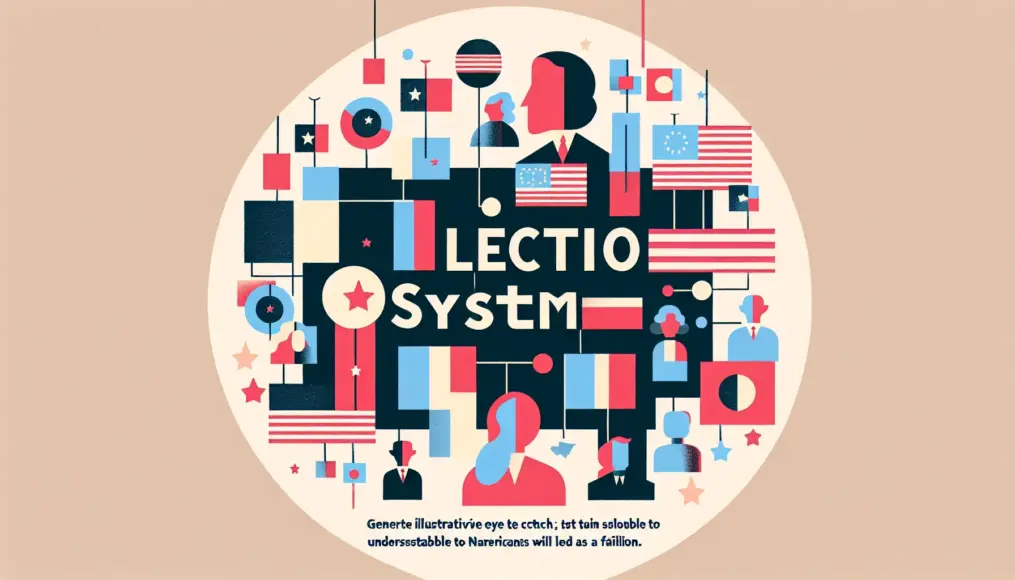Discovering the election system of the House of Representatives can be quite a journey. It’s fascinating to see how this system evolved over the years, especially after the war. By exploring its history, we can better understand the current challenges and opportunities facing our political landscape today.
As we dive into the details, we’ll uncover the key milestones that shaped this system and the reforms that have been implemented. Understanding these changes helps us appreciate how they impact our voting rights and representation.
Moreover, the roles and responsibilities of the members of the House of Representatives play a significant part in how the election system functions. Knowing what these representatives do can give us insight into their connection with the community and the importance of our votes.
Finally, we can’t overlook the future. With ongoing discussions about improving the election system, it’s essential to consider the current issues and how we can promote greater voter participation. Let’s embark on this exploration together!
- Historical background and key milestones of the election system.
- Differences between single-member districts and proportional representation.
- Current issues and future improvements for voter participation.
Historical Background of the Election System of the House of Representatives
Birth of the Election System After the War
The election system of the House of Representatives was born out of necessity in the aftermath of war. As Japan sought to rebuild and redefine itself, a new political framework was essential for establishing democratic governance. This period marked a significant shift, moving away from the pre-war political structures that had limited representation and participation.
The first elections under the new system took place in 1946, and it was a groundbreaking moment for many citizens. For the first time, women were allowed to vote, which dramatically expanded the electorate. This change not only empowered women but also brought diverse voices into the political sphere, reflecting a broader spectrum of society. The election system was designed to ensure that all citizens had a say in the governance of their nation.
In these early days, the focus was on creating a fair and transparent electoral process. This meant implementing regulations to prevent corruption and ensure that elections were conducted freely. As we look back, it becomes clear that these foundational changes set the stage for the evolution of how elections are conducted today.
Additionally, the introduction of the single-member district system aimed to strengthen the connection between representatives and their constituents. This approach made it easier for voters to identify their representatives and hold them accountable, which has been a crucial aspect of healthy democratic governance.
- The election system was established to promote democracy after the war.
- Women’s suffrage was introduced, expanding the electorate significantly.
- Regulations were implemented to ensure fair and transparent elections.
Key Milestones in System Reform
As we continue to explore the election system, several key milestones stand out in its evolution. For instance, the introduction of proportional representation in the 1990s was a pivotal moment that aimed to enhance the fairness of elections. This reform allowed smaller parties to gain representation, which diversified political discourse and provided voters with more choices.
Another significant change occurred in the early 2000s with the introduction of the mixed-member system. This hybrid approach combined single-member districts with proportional representation, aiming to balance the advantages of both systems. This meant that while individual representatives were elected, the overall composition of the House could better reflect the electorate’s preferences.
These reforms were not without challenges, as debates around them often highlighted the tensions between maintaining local representation and ensuring broader political diversity. However, they marked important steps towards creating a more inclusive election system, which continues to evolve in response to the needs of voters.

For those interested in a deeper understanding of the election systems in Japan, you might find it beneficial to explore the article titled Unlocking the Secrets of Japan’s Parallel Voting System: A Guide to Understanding. This piece delves into the intricacies of Japan’s parallel voting system, providing insights into its structure, benefits, and challenges, which complements the historical context discussed in this article.
- Proportional representation was introduced to enhance fairness in elections.
- The mixed-member system was implemented to combine local and proportional representation.
- Ongoing debates around reforms reflect the dynamic nature of the electoral process.
Current Structure of the House of Representatives Election System
Differences Between Single-Member District and Proportional Representation
Now that we’ve covered the historical background of the election system, it’s essential to understand how it operates today. One of the key aspects of the House of Representatives election system is the distinction between single-member districts and proportional representation. Each system has its benefits and challenges, shaping how citizens engage with their representatives.
In the single-member district system, each district elects one representative. This system encourages a close relationship between voters and their elected officials, fostering accountability and direct communication. Voters often feel a stronger connection to their representative, as they know that individual is responsible for their district’s interests. However, this system can also lead to situations where smaller parties struggle to gain a foothold, resulting in a less diverse political landscape.
On the other hand, proportional representation allows for multiple candidates to be elected based on the overall percentage of votes each party receives. This system aims to reflect a broader spectrum of political opinions, giving smaller parties a chance to be represented in the House. While it enhances political diversity, it can sometimes blur the lines of accountability, making it harder for voters to identify who is responsible for specific issues in their communities.
- Single-member districts create direct accountability between voters and representatives.
- Proportional representation encourages political diversity by allowing smaller parties to gain seats.
- Each system offers unique advantages and challenges for voters and political engagement.
Voting Process and Election Management
Understanding how the voting process works is crucial for grasping the election system’s dynamics. Elections in the House of Representatives are meticulously organized, involving various stages from candidate nomination to the final tally of votes. This structured process ensures that elections are fair and transparent, which is vital for maintaining public trust in the political system.
The journey begins with candidates being nominated, often through political parties or as independents. Once the candidates are set, voters receive information about their choices, including campaign platforms and public debates. This stage is crucial, as it empowers citizens to make informed decisions about who will represent them.
On election day, voters cast their ballots, which are then collected and counted under strict supervision. Election management is a collaborative effort involving various stakeholders, including the government, local authorities, and civil society organizations. This collaboration aims to uphold the integrity of the electoral process, ensuring that every vote is counted accurately. As we reflect on these elements, it’s clear that the management of elections plays a vital role in shaping public confidence in the system.
- The voting process includes candidate nomination, public information dissemination, and ballot casting.
- Voter education is essential for informed decision-making during elections.
- Collaborative efforts in election management help ensure the integrity and transparency of the electoral process.
Roles and Responsibilities of Members of the House of Representatives
What Does a Member Do?
Understanding the roles and responsibilities of members of the House of Representatives gives us a clearer picture of how our election system functions. Each member has a significant duty to represent the interests of their constituents, which involves a range of activities from drafting legislation to participating in committee meetings. They play a key role in shaping policies that affect our everyday lives, addressing issues like education, healthcare, and the economy.
In addition to creating laws, members are responsible for communicating with their constituents. This means they listen to the concerns and needs of the people in their district and advocate for their interests in the legislature. It’s important for them to maintain a strong connection with their community, as this helps them to be effective representatives who truly understand the issues at hand.
Moreover, members often engage in outreach activities, including town hall meetings and community events. These gatherings provide an opportunity for voters to voice their opinions and ask questions, fostering a sense of accountability between representatives and their constituents. This interaction not only strengthens democracy but also makes the political process more accessible and transparent for everyone involved.
- Members draft and propose new legislation.
- They communicate regularly with constituents to understand their needs.
- Outreach activities help foster accountability and transparency.
Connection with the Community
The connection between members of the House of Representatives and their communities is crucial for a functioning democracy. When representatives are in tune with the concerns of their constituents, they can more effectively advocate for policies that reflect the community’s interests. This relationship is built on trust and open communication, which helps to bridge the gap between the government and the people.
Members often utilize various channels to stay connected with their constituents, such as social media, newsletters, and local events. This engagement is vital, especially when it comes to discussing important issues or upcoming elections. By keeping the lines of communication open, representatives can ensure that their constituents feel heard and valued, encouraging greater participation in the electoral process.
As we consider the evolving nature of these connections, it’s clear that the role of members goes beyond just legislative duties. They serve as a vital link between the government and the people, making it essential for them to maintain strong ties with their communities. This connection ultimately shapes the effectiveness of our election system and the quality of representation we receive.

If you’re intrigued by the intricate relationship between political representatives and their constituents, you might find it enlightening to explore this article titled What Impact Does a Unified Election System Have?. It delves into how election systems can shape political participation and accountability, complementing the themes discussed in this post about the roles of members of the House of Representatives.
- Open communication fosters trust between representatives and constituents.
- Various channels are used to keep the community informed and engaged.
- Strong community ties enhance the effectiveness of the election system.
Future Improvements and Prospects for the Election System
Current Issues with the Existing System
As we look toward the future of the election system, it’s essential to acknowledge the current challenges it faces. Many citizens express concerns about voter apathy, which can significantly affect participation rates in elections. When people feel disconnected from the political process, they may choose not to vote, leading to an underrepresentation of diverse voices in the House of Representatives.
Additionally, the complexity of the electoral system can be daunting for voters. With multiple voting methods and district boundaries, many individuals may find it challenging to navigate the process. This complexity can discourage participation, as some may feel unsure about how to cast their votes effectively. Addressing these issues is crucial for fostering a more engaged electorate.
Furthermore, the influence of money in politics remains a pressing issue. Campaign financing can create an uneven playing field, making it difficult for candidates without substantial financial backing to compete effectively. This can limit the choices available to voters and hinder the emergence of new ideas and perspectives in the political arena.
- Voter apathy leads to lower participation rates in elections.
- Complexity of the electoral system can discourage informed voting.
- Influence of money in politics creates an uneven playing field for candidates.
Measures to Promote Voter Participation
To enhance voter participation in upcoming elections, several measures can be considered. First, simplifying the voting process can make it more accessible. Providing clear information about how to register, where to vote, and the voting methods available can empower citizens to engage more fully in the electoral process.
Second, initiatives aimed at increasing awareness about the importance of voting can help bridge the gap between citizens and their government. Campaigns that educate the public on the impact of their votes can inspire a sense of ownership and responsibility toward the democratic process. Engaging communities through local events and discussions can further encourage participation and foster a deeper connection with the electoral system.
Ultimately, collaboration between government bodies, civil society, and local communities is vital to drive these changes. By working together, we can create an environment that encourages active participation, ensuring that every voice is heard in the House of Representatives.
- Simplifying the voting process can enhance accessibility.
- Awareness campaigns can inspire citizens to engage with the electoral process.
- Collaboration among various stakeholders is key to promoting active participation.
Summary
In reflecting on the evolution of the House of Representatives election system, we can see how historical changes have shaped the current political landscape. From the introduction of women’s suffrage to the implementation of proportional representation, each reform has made significant contributions to enhancing democratic participation. By understanding these developments, we can appreciate the challenges and opportunities that lie ahead in promoting voter engagement and accountability.
As we consider the future of our electoral system, addressing current issues and implementing measures to increase participation are essential. Simplifying the voting process and raising awareness about the importance of each citizen’s vote can foster a more engaged electorate. Collaboration among various stakeholders will be crucial to ensure that every voice is heard and represented in the House of Representatives.
- The election system has evolved significantly, promoting democracy and representation.
- Key reforms, such as proportional representation, have contributed to a diverse political landscape.
- Addressing current challenges and promoting voter participation will be vital for the future of the electoral system.
We would love to hear your thoughts on this topic! What do you think are the most pressing issues in the current election system, and how can we work together to improve voter engagement?



Comment